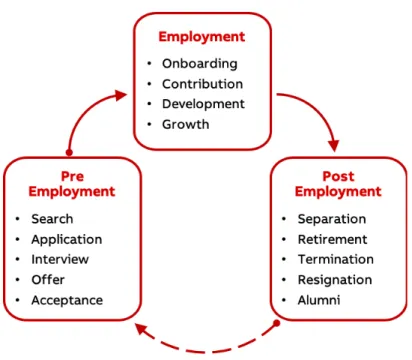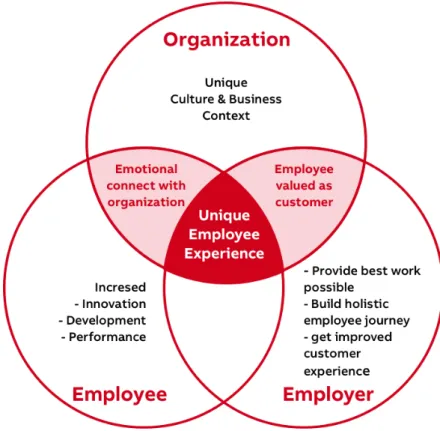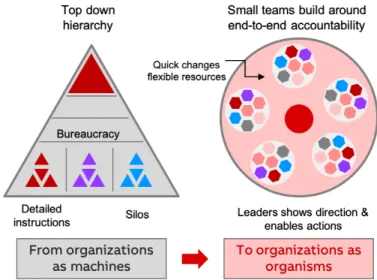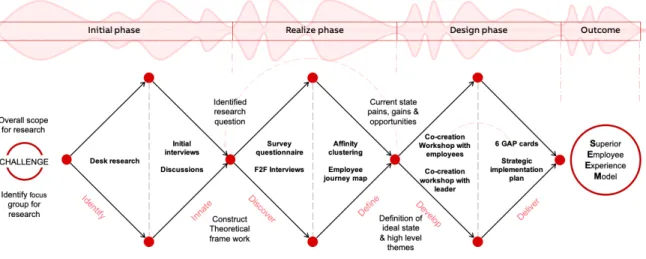Employee experience and success in customer experience are seen to have direct correlation, so organizations must modernize themselves to see the world through the eyes of their employees. There is a shift in the approaches of HR from integrated talent management to building employee experience and giving focus to how employees work, and their personal life can be better managed (Vallikat2019).
Motivation for the thesis
Make them realize that the ID&UX design team's position is central to deliver the organization's core value of superior customer experience and develop customer-centric thinking through designs and processes. Therefore, the results of the research work can be useful for the ID&UX design team and HR to build a superior employee experience in the case company.
Aim and research questions
The case company
The composition of the ID&UX design team consists of function owners from industrial design, UX/UI design and service design, permanent UX/UI and Service designers, design students and consultants with a total of 12 designers working in the team. The design team also develops their internal design processes and ways of working to effectively participate in projects to deliver superior customer experience.
Research approach and structure of the thesis
Taking into account the current employee experience in the case company, the purpose of the thesis and motivational factors collected from various sources were used to create research questions and research motivators. The key driver of the thesis is to provide the case company with valuable current information about employee experience and engagement from ID&UX design teams to human resources and management teams.

Understanding employee experience
The employee experience is the journey an employee takes at each stage of the employee life cycle with their organization. This is sought in such a way that understanding the emotional responses of the employer and employees is key to predicting the behavior of employees' experiences in the organization.
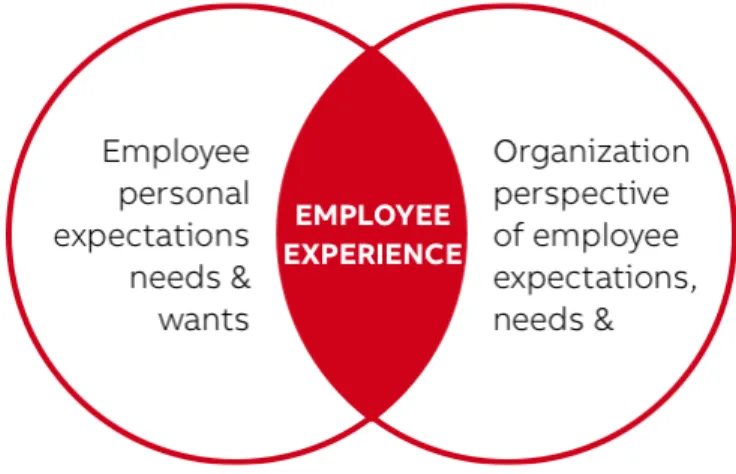
Creating engaged employee environment
Creating a high performing culture requires investing in employees in good times and bad. The third component is the simultaneous expression of three dimensions of investment by the employee (Eldor & Vigoda-Gadot 2017, 531).
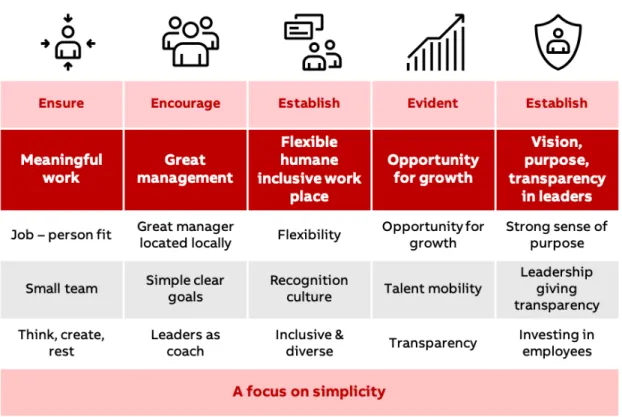
Essentials of work environment
This is why everyone in the organization cares the most about the cultural environment of the workplace. Once the organization has achieved the best employee experience, they should share stories of the impact the organization has on employees and the community as a whole.
Employee and customer experience connection
This chapter will help us map employee and customer relationships in the research design process of chapter 3.
The agile organization
Research shows that flexible organizations have a 70% chance of becoming top healthy organizations that show the best indicators of long-term performance. They are radically rethinking their underlying technologies to support rapid iterations, increased speed of implementation, and flexibility through new practices and tools (Smet, Lurie, et. all 2018, 6).

Gap model
Based on the vision and strategies of the organization, the employee experience service specification is drawn up. Typically, HR teams are aligned with the expectations of the employee experience service from the employee's perspective.
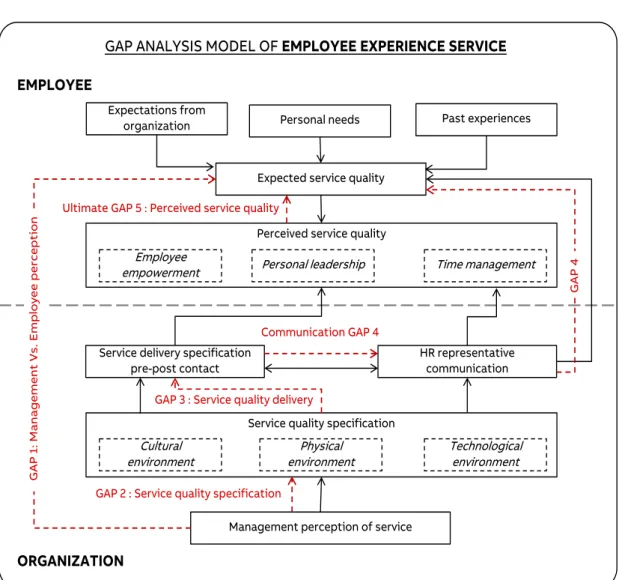
The eight steps change management process
It also takes a lot of effort to motivate employees in the organization to invest their time and effort in supporting the changes. Therefore, when an employee believes in the vision of change, he will have enough time, money and support necessary for effectiveness (Kotter.
Employee empowerment
Organizations need to build trust with their employees about their work and work-related decisions. Thus, leaders must be consistent and diligent in the measures they take and define rewards so that employees are motivated to do their best (Daum 2013).
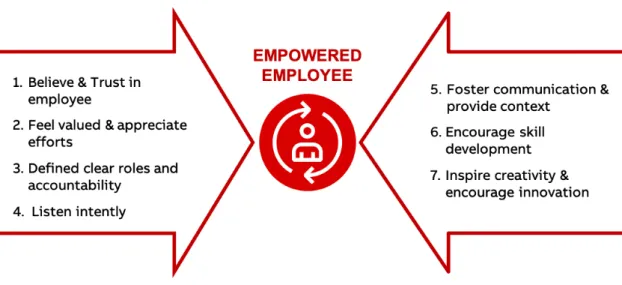
Organizational leadership qualities
Third, leaders' ability to demonstrate effective leadership reflects relevant skills acquired through real-life experience. In shared and servant leadership, leaders are catalysts that motivate team members to work in a team-oriented manner, to participate in making strategic and organizational decisions that will affect the team and their work results.
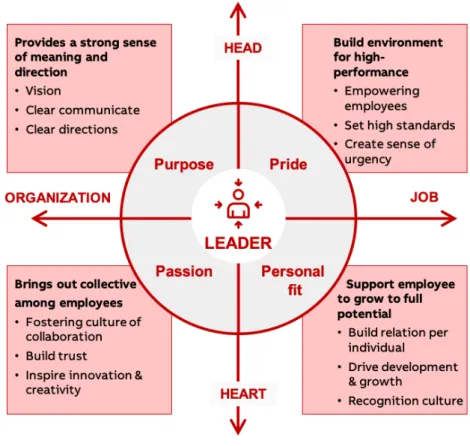
Time management
Leaders manage time for the organization and their team members who work with them, as time management is not only about one's individual productivity, but also about the productivity of an organization. Time management is challenging, and one solution usually does not fit all, so they must be tailored to fit the individual's work style preferences and organizational culture.
Service design
The service design process in this study follows the Double Diamond model created by Design Council, which is, "A clear, comprehensive and visual description of the design process" (Design Council 2019). Along with identified serviced design methods used in every phase of the extended Double Diamond representation.
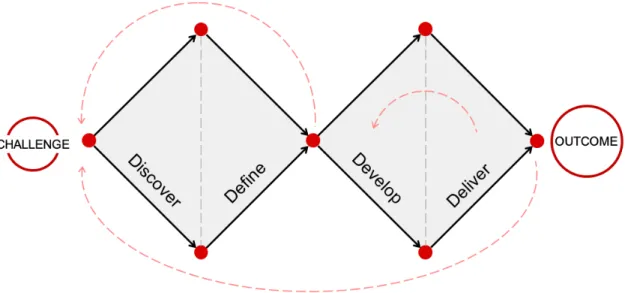
Initial phase
Desk research
The researcher gained understanding regarding the current practices used for employee engagement related topics in the case company. Based on desk research and initial interview, a broader picture of the current state of employee experience journey in the case company can be created than initial concept.
Initial interviews and discussions
Second interview was conducted with HR representative to understand current HR practices and activities related to the employee experience in the case company. Together with this researcher and HR representative collaborated to outline the current employee journey in the case company from an HR and management perspective.
Discover phase
Quantitative research method
Considering the understanding gained from the case company's HR vision, strategy and practices, the research had limited its scope to not cover all stages of the employee experience from entry to retirement, but specific topics from employment phase were considered in the scope of the research. There are some disadvantages to using the quantitative research method, as the research method does not address the full range of problems in the behavioral or physical sciences.
Qualitative research method
This is why researchers shape their qualitative research methods into the process and act as an active participant to develop the research process. Successful qualitative research usually has a circularity of the research process and method to ensure that the research results are richly thought out and insightful (Eriksson & Kovalainen 2008).
Mixed research method
These questions are derived from understanding that is in theoretical framework of chapter amp; 2.4 of the research and the knowledge generated from the desk research in the initial phase. This questionnaire created was sent to 9 respondents in the identified team of the case company.
Define phase
Affinity clustering method
This method is intended to take into account different types of data such as quotes, photos, website screenshots, statics, artifacts, etc. This process helps the researcher visualize and see the current state of employee experience as a big picture with some prominent themes that stand out from the research wall.
The employee journey map
Based on the insight obtained in the affinity clustering method and the employee journey map, the outcomes were further analyzed using the employee experience service gap analysis model, which is described in chapter 2.6 – Gap model. While the affinity clustering method revealed three key design drivers which were further analyzed to create GAP maps: (4) Leadership qualities, (5) Employee empowerment and (6) Time management.
Develop phase
The facilitator of the workshop used some warm-up and energizers to boost the energy of the participants and keep them engaged in the workshop activities. The group ideas two different aspects of the problem, the first set of solutions was from the employee's self-initiation to eliminate the GAP, and the second set of solutions was the employees' expectations from the organization to eliminate the GAP.
Deliver phase
In the next chapter, the results of the workshop and the entire research and development process are presented phase by phase after the presentation of the double diamond for this research. The results of the survey collected from the participants and the results of the analysis of each question, this quantitative method was carried out during the discovery phase.
The current state employee journey map
Based on the resume review, the first round of acceptance or rejection is sent to the applicants. Organization provides the necessary hardware and software needed to perform the tasks on the job.

Survey outcomes from discover phase
This also shows that most of the employees do not feel appreciated and recognized for their good work in the organization. These mixed results indicate that not all employees in the organization feel that their values are aligned with those of the organization.
Face-to-face interview outcomes from discover phase
The value of the team must be defined within the team and in the works council organization. Enough time to give the employee to think and produce good creative results.

GAP cards as initial prototype
The top right corner shows the criticality and feasibility measurement for the theme GAP map. This chapter draws together the results of research development work and examines them through the theoretical framework of the thesis.
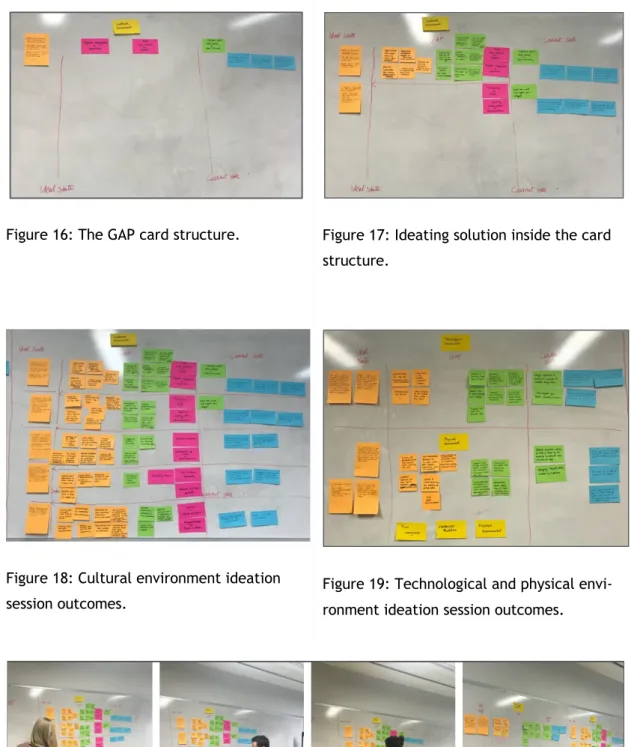
Research core outcomes
The thesis research development process used different theories, methods and tools to construct Superior Employee Experience Model (SEEM) with the case company. The SEEM model has developed steps to achieve superior employee experience culture in the organization.
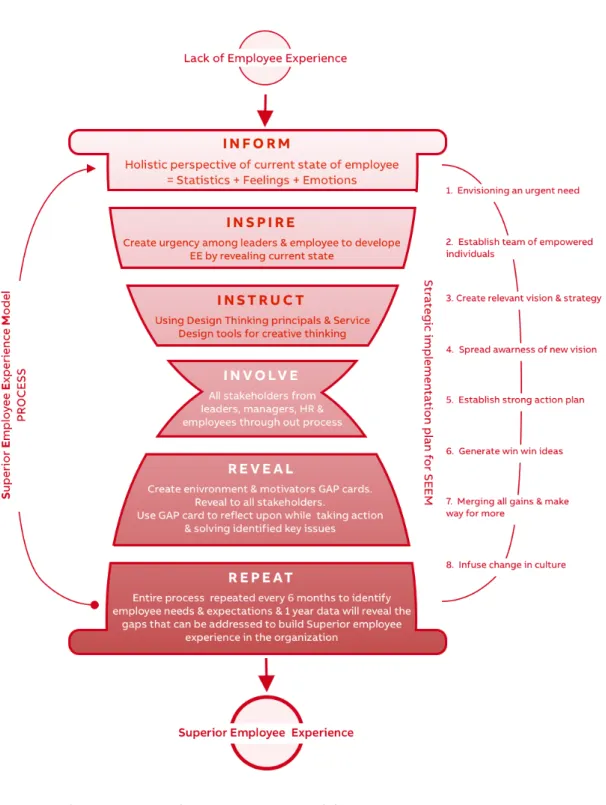
GAP cards established suggestions
Such a philosophy in the company will bring positive results, where the company grows and surpasses the competition. The manager must be fully involved in the employee's success by adopting a coach and mentor mentality.
Strategic implementation plan for SEEM
Combine all winnings and make room for more - collect and review all winnings via GAP cards to identify winnings. Drive culture change – When all physical technology environments are updated with solutions provided by GAP cards and the company builds key strengths through active employee empowerment, leadership qualities and time management.
Future research path
The direct connection between employee experience and customer experience (and how to improve both)”, Forbes Communications Board. Retrieved July 30, 2020 https://medium.com/@thebriantracy/how-to-set-priorities-using-the-abcde-method-8f684aec7e4b.
